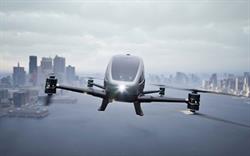RAeS Article: Taking Revolutionary Leaps Toward a New Age of Aviation Written 17 April 2023
By Ming Chang, AIAA Aeronautics Domain Lead* and Senior Director of Flight Technologies, General Atomics Aeronautical Systems, Inc (Retired).
Written 17 April 2023
Originally published by Royal Aeronautical Society

The first age of aviation proved that human flight was possible and developed aviation into a safe and viable transportation industry. The second age of aviation started with the development of the jet engine, which enabled higher speeds, improved safety, and paved the way for air travel accessibility for all. The next age of aviation will separate power from propulsion in conjunction with specialised materials and modern avionics and software to enable unique mission-specific aircraft, enhance people’s connectivity, and fully elevate human activity while reducing its environmental footprint.
The widespread use of UAVs and drones –both commercial and recreational – has led the Federal Aviation Administration (FAA) to adapt its certification processes. Similarly, the FAA must facilitate the safe use of Advanced Air Mobility (AAM) systems for local passenger and cargo transport. As the FAA refreshes its certification strategy, we expect to see clear specifications, regulations, and standards emerge that will strike an appropriate balance between safety and innovation.
Incremental advances in aerodynamics, lightweight structures and materials, manufacturing processes, and air traffic efficiencies will provide only part of the solutions to power aircraft in this next age of aviation. For significant carbon reductions, more efficient aircraft engines and new fuels are needed. The industry will have to shift to more sustainable sources of energy, from sustainable fuels to various forms of electric propulsion to hydrogen.
The transition from oil to new energy sources presents challenges for every facet of aviation systems. The R&D infrastructure in the aeronautics community is ready to meet these challenges through development of sustainable aviation fuels (SAF), hydrogen fuel cells (HFC), hydrogen turbine propulsion (HTP), battery-electric vehicles (BEV), and innovations yet to be discovered. Past R&D investments ensure that battery-electric vehicles deliver improved performance by a few percent annually. HFC systems are likely to be cost competitive with internal combustion in as little as five years. ‘Green’ hydrogen production costs are expected to decline to levels competitive with fossil derived sources. Meanwhile, SAF is available today but needs support for greater production and wider adoption. What will it take? If the community focuses and invests in these products and systems, aeronautics can play a leading role in decarbonisation.
AIAA believes we can achieve decarbonisation in aeronautics by 2050. We see several steps needed:
- More government support for the goal of carbon-free aviation by 2050
- Deploying SAF for current airline fleets, while also addressing fleet recapitalization
- Adopting hydrogen fuel cells and other clean, renewable energy sources
- Focusing on new R&D
- Developing the ‘green’ aviation workforce
- Promoting alternate fuel infrastructure development – SAF and hydrogen hubs – to reduce refinery or transportation costs and increase supply availability
 Autonomy is certainly going to be part of this next age of aviation and America’s transportation future. With clear operational guidelines, regulations, and standards for accommodating and incorporating autonomy, we see a thriving integrated urban and regional airspace in the next decade. The benefits of autonomy will enhance safety for everyone and enable capabilities we are only just imagining.
Autonomy is certainly going to be part of this next age of aviation and America’s transportation future. With clear operational guidelines, regulations, and standards for accommodating and incorporating autonomy, we see a thriving integrated urban and regional airspace in the next decade. The benefits of autonomy will enhance safety for everyone and enable capabilities we are only just imagining.
In 10 years, we will see many new aeronautics capabilities introduced, and the next generation will experience flight in ways we are just imagining. AIAA is excited about advancing these opportunities as we shape the new age of aviation.
To join the conversation and learn more, attend the 2023 AIAA AVIATION Forum, 12–16 June 2023, in San Diego. Visit: aiaa.org/aviation for more information.
About the Author
As AIAA’s Aeronautics Domain lead, Ming Chang ensures that the US aeronautics community focuses on integrating ground and air vehicles in new ways, building on the industry advances made since the early 20th century taking us further and faster, possibly commercialising supersonic and hypersonic flight. He is supporting the community’s emphasis on addressing carbon emissions and sustainability with advanced materials and clean energy sources.
